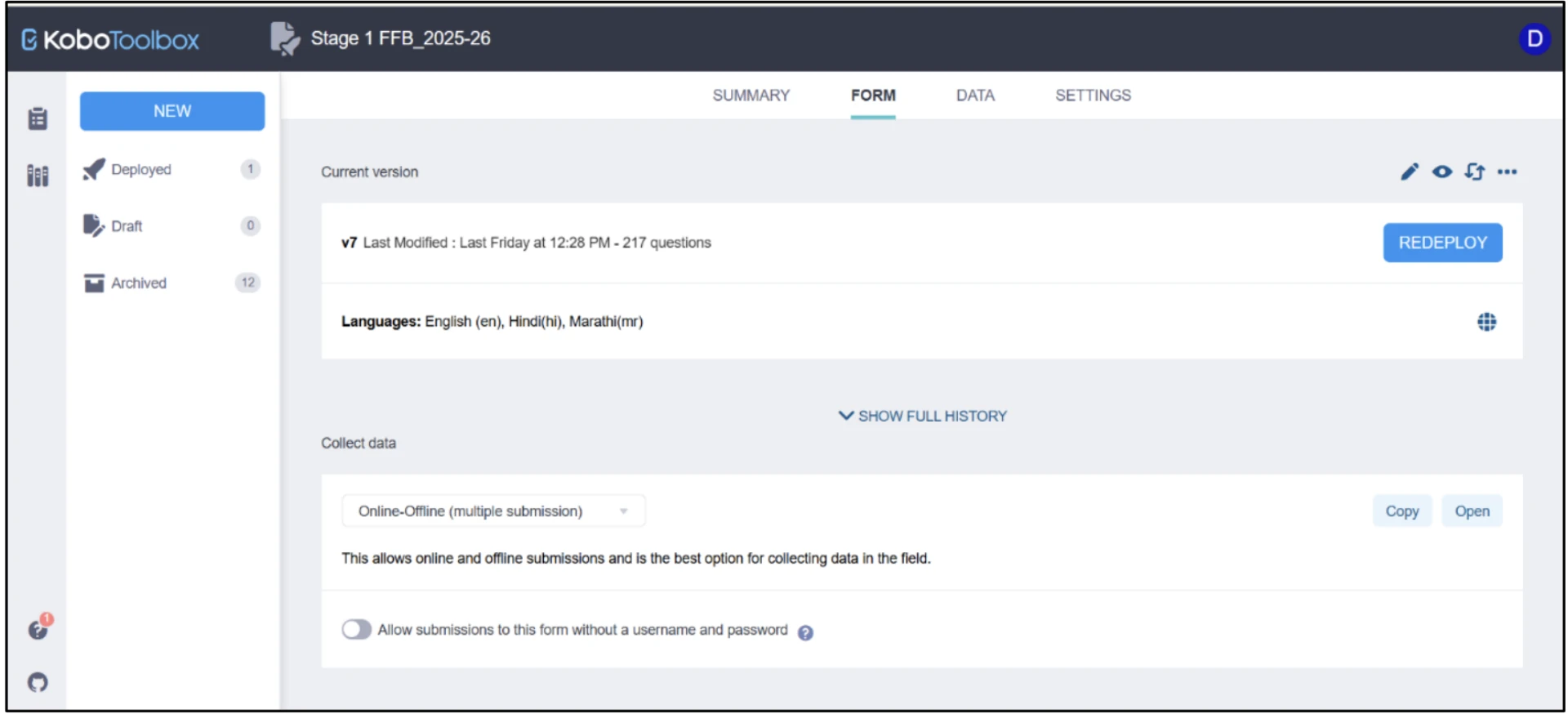Data, Trust and Regeneration: How Beetle Builds MRV Systems That Work
Sept 16, 2025 | Ravikumar Ganesan - Senior Advisor, MEL, Beetle Regen
When you work in regenerative agriculture, ambition alone won't do -it needs proof. Not just proof for partners or buyers, but credible, real-time data that is visible to every stakeholder and actionable for the people who matter most: farmers.
In June 2024, we decided to build a robust data management system for our operations. We knew it would be a long journey, and that the system would only succeed if it was practical for field teams, resilient to operational challenges, and genuinely useful in everyday decision-making.
We believe that Digital Tools for traceability and transparency do more than just record actions; they make accountability possible. By capturing verifiable, time-stamped field data and linking it to supply-chain records, these systems prove where impact happened, who benefited, and how carbon outcomes were achieved for every kg of regenerative cotton linked to supply chains. That unlocks market trust, policy engagement, and premium value for farmers while enabling scalable, data-driven pathways for true regenerative transformation.
A year later today, the effort has paid off. Together, we developed a clear theory of change, a practical monitoring & evaluation framework, and a focused set of indicators for progress and impact.
We iterated these tools with input from field staff, farmers, customers and partners so the system would be both technically sound and fit for diverse, on-ground conditions and stakeholder needs.
Our MRV Approach: Designed for Decision-Making
From day one, our goal was simple: the data had to be live, online, and usable for quick decisions. We didn't want numbers that only surfaced in year-end reports; we wanted insights that could guide action during the season.
That led us to a scalable, stage-based data collection model aligned to the cotton-growing calendar -each stage capturing the activities and risks unique to that period. We faced the realities of varied geography, social contexts, and the need to train and monitor large field teams.
From day one, our goal was simple: the data had to be live, online, and usable for quick decisions. We didn't want numbers that only surfaced in year-end reports; we wanted insights that could guide action during the season.
That led us to a scalable, stage-based data collection model aligned to the cotton-growing calendar -each stage capturing the activities and risks unique to that period. We faced the realities of varied geography, social contexts, and the need to train and monitor large field teams.
The answer was digital collection over paper: faster, more reliable, and far more accurate. We selected Kobo Toolbox, an open-source platform well suited to building adaptive forms with skip logic and error control -features that significantly reduced data mistakes in the field.

Quality & Credibility First
With growing concerns around greenwashing, credibility is non-negotiable. We're embedding routine data-quality checks at project and central levels, developing SOPs, and keeping third-party verification on the table for larger-scale reporting. The aim is clear: data that stakeholders can trust. We are also partnering with remote sensing applications to build in dynamic soil and crop monitoring to avoid lags between analysis and decision making.
Data That's Shared, Not Shelved
Data is powerful only when people see and use it. We're designing simple, live dashboards to share insights with the teams that collect the data, so learnings feed back into operations in real time. This approach reduces errors, builds data literacy, and creates a feedback loop where field teams learn from what they record.
Carbon Data Built In
Climate impact is central to Beetle's work, so carbon measurement is not an afterthought. We design our interventions with clear carbon outcomes in mind, collect the right data at the right time, and feed those observations into models and tools that translate field actions into verifiable CO₂ removal and sequestration. Biochar batches are tracked and geo-tagged, soil carbon changes are monitored through field testing and remote sensing, and practice-level emissions are estimated using established calculators during annual planning and reporting.
We collect detailed carbon-related data and use the Cool Farm Tool for annual planning and footprint analysis. This lets us compare operational designs, measure sequestration potential, and produce transparent reports for partners and buyers.

Always Learning, Always Improving 🐞
Our MRV system is not a finished product -it's a living process.
Like regenerative agriculture itself, it evolves with each season, each farmer conversation, each supply chain transaction, and each new challenge.
We're committed to continuous improvement: testing, learning, adjusting, and scaling what works so we can drive measurable climate gains, strengthen farmer livelihoods, and build trust through transparent, verifiable results.